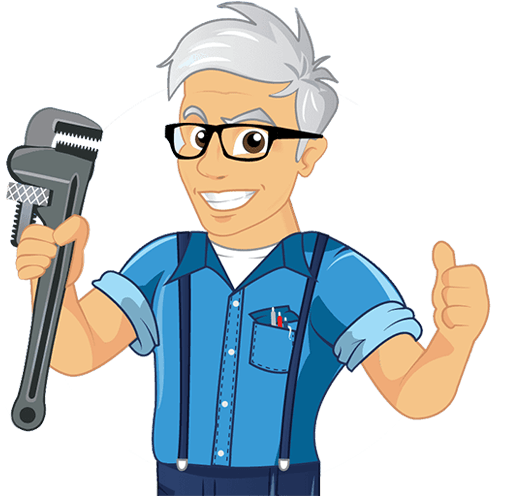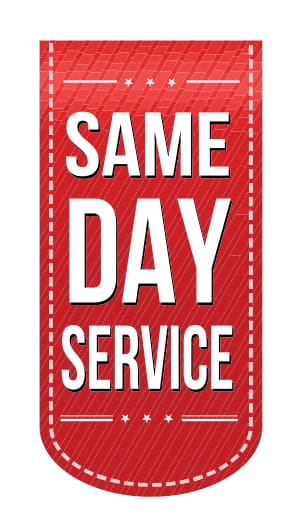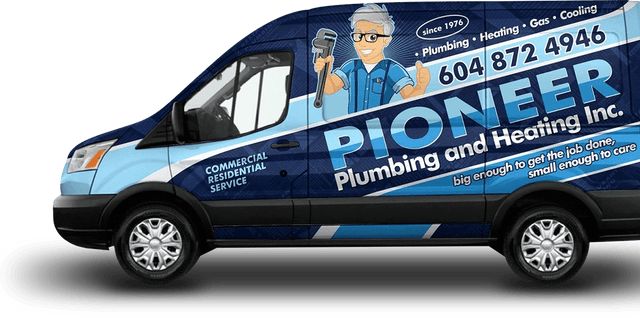Does Your Plumbing System Need a Backflow Preventer?
Think of a backflow preventer like a locking turn style for your plumbing. Water can only go one way, and it can’t come back. If you don’t have a backflow preventer, low water pressure due to a burst water main or frozen pipe can cause non-potable water (like sewage or hose water) to be pulled into your plumbing system. From there it can introduce outside pathogens into your drinking water, and you may not realize it until you get sick.
Ensuring your current backflow prevention system is operating correctly, or having a backflow preventer installed is your first line of defense against harmful backflow from the sewer. We provide both so you are protected no matter what.
Backflow prevention is a smart investment for home and business owners. We strategically install backflow preventers to protect your water supply as close to the source as possible.
How Does Backflow Occur?
Anywhere a potable water source line and a non-potable water source line connect is called a cross-connection. Back pressure occurs when a non-potable water source has a higher pressure than the potable source it is connected to. That can cause non-potable water to force its way into a potable water line.
Low pressure in the water system creates back-siphonage. Instead of being forced into your system by higher pressure, your home plumbing system actually pulls in non-potable water from the lower pressure public water system. This pressure drop can occur from something as simple as a fire fighter using a hose connected to a fire hydrant.
Why Prevent Backflow?
Non-potable water isn’t considered safe for human consumption- it can contain heavy metals, bacteria, chemicals, and other contaminants. If that non-potable water enters your drinking water system, you may consume, wash with, or otherwise come into contact with substances that are harmful to your health and the health of others.
Where Can a Testable Backflow Preventer Be Installed?
Also called backflow prevention assemblies, these devices protect potable drinking water sources from backflow. They can be installed in two places:
At the service entrance: We can install a backflow assembly where a mainline enters a building or a primary flow point like a commercial boiler. This is common for large office buildings, apartments, irrigation equipment, laboratories, and wherever there is a commercial fire sprinkler system.
At an individual outlet: An individual outlet occurs after the main service entrance in your plumbing system. A system that is fed by a main line at the service entrance will have multiple outlets. Backflow preventers can be installed on individual outlets and cross connection points like those of a sprinkler system or boiler supply line.
What kind of backflow prevention devices do we install?
- Air gap backflow devices
- Double check valves
- Reduced pressure principle devices
- Pressure vacuum breaker assembly
Proactive Protection Begins With Backflow Prevention
Environmental Canada declared 2012, “ The year of the urban flood .” Heavy rainfall is the leading cause of basement flooding and floods are the leading cause of property damage .
Does your home meet the National Plumbing Code of Canada’s standards?
According to the National Plumbing Code of Canada , when a sewer connection “may be subject to backflow, a…backwater valve shall be installed on every fixture drain connected to them when the fixture is located below the level of the adjoining street.”
How does a drainage valve protect your property?
A properly installed and operational backflow prevention system keeps water from entering the basement of your home. Backflow valves prevent water from moving in the wrong direction. In the case of a flooded public sewer system, it keeps water from entering your drainage lines and bringing with it human waste, bacteria, and other contaminants.
How else do our backflow preventers protect your home and family?
- Backflow prevention systems installed on hoses and sprinklers prevent pesticides and fertilizer-laced water from re-entering your home when water in the outbound system is pulled back into your home plumbing system.
- Prevent contamination to your water supply from sewer system backflow. A flooded basement doesn’t mean the basement is the only affected area of the home. Backflow can pull contaminated water into a mainline if you don’t have a backflow prevention device to stop it.
- Schedule professional backflow testing to ensure your existing units are fully functioning. By the time backflow occurs it is already too late for preventative testing and maintenance. Existing damage will have to be remediated before backflow system repairs can take place or a new preventer can be installed.
Backflow mishaps are preventable. Contact us today.
Why wait until backflow related damage has already occurred? Our backflow testing and installation provides peace of mind and protects you from damage to your property and person. Call us today to schedule your backflow test or preventer installation.






